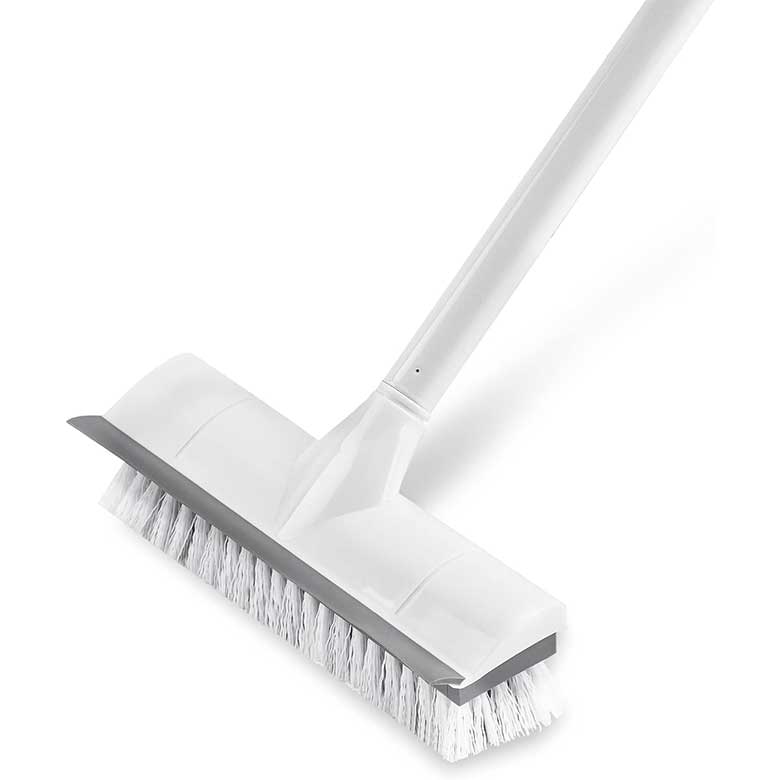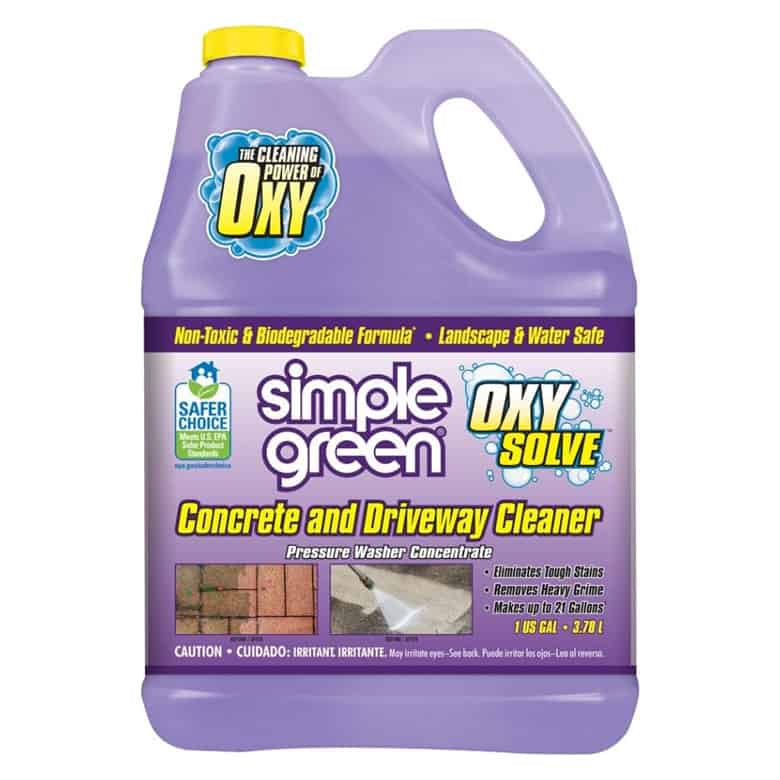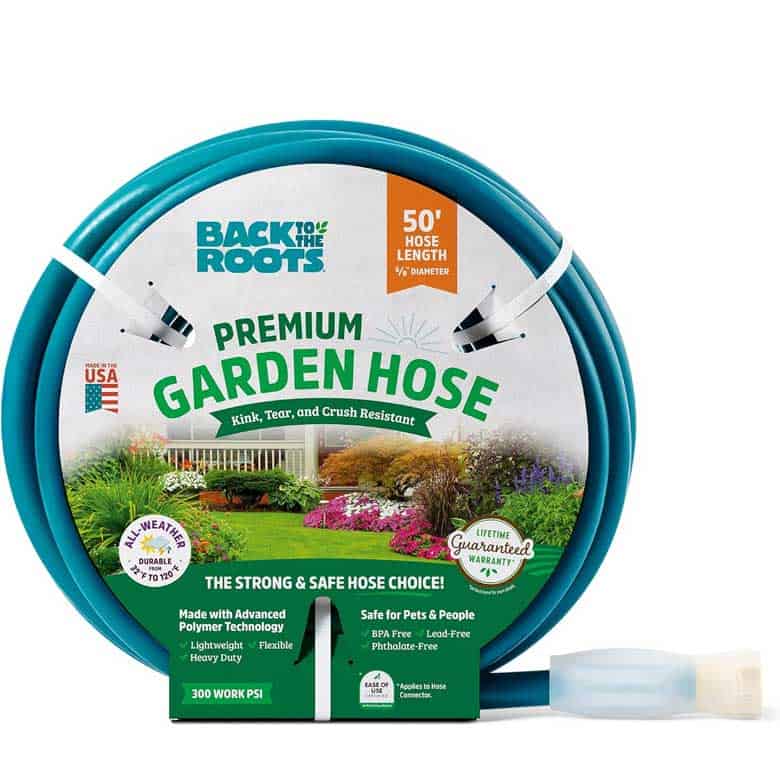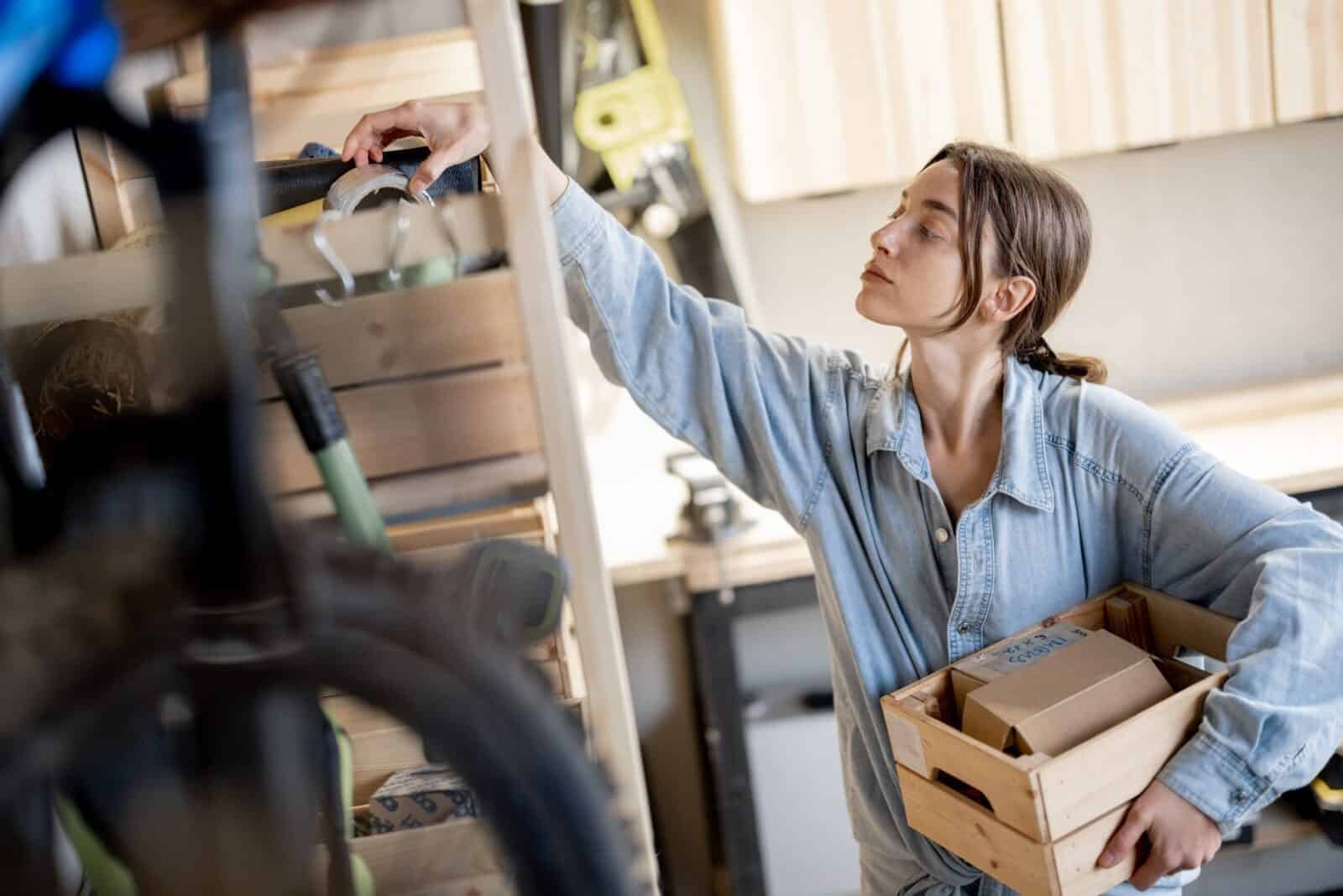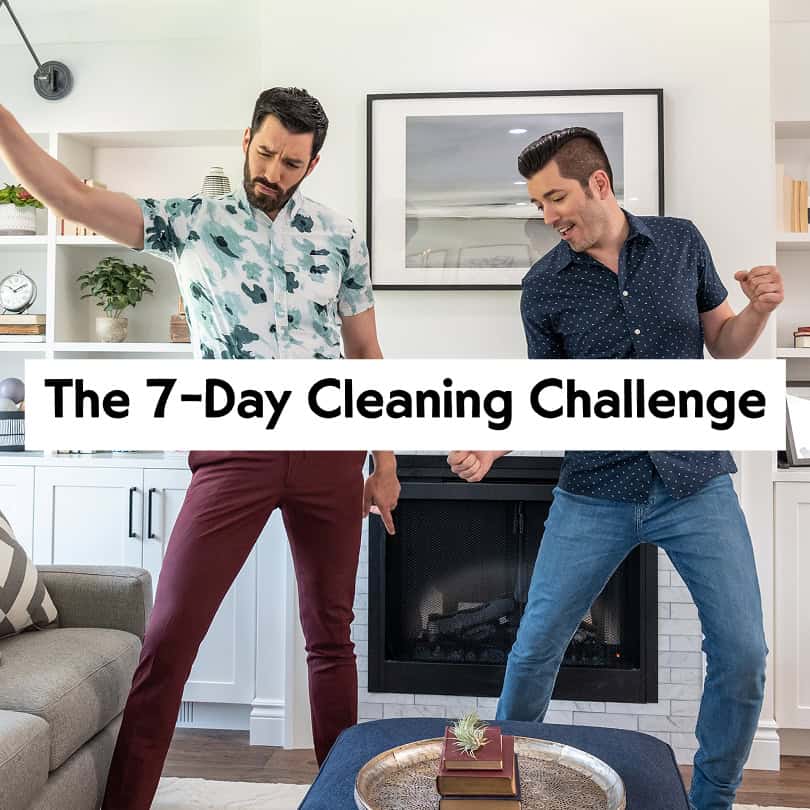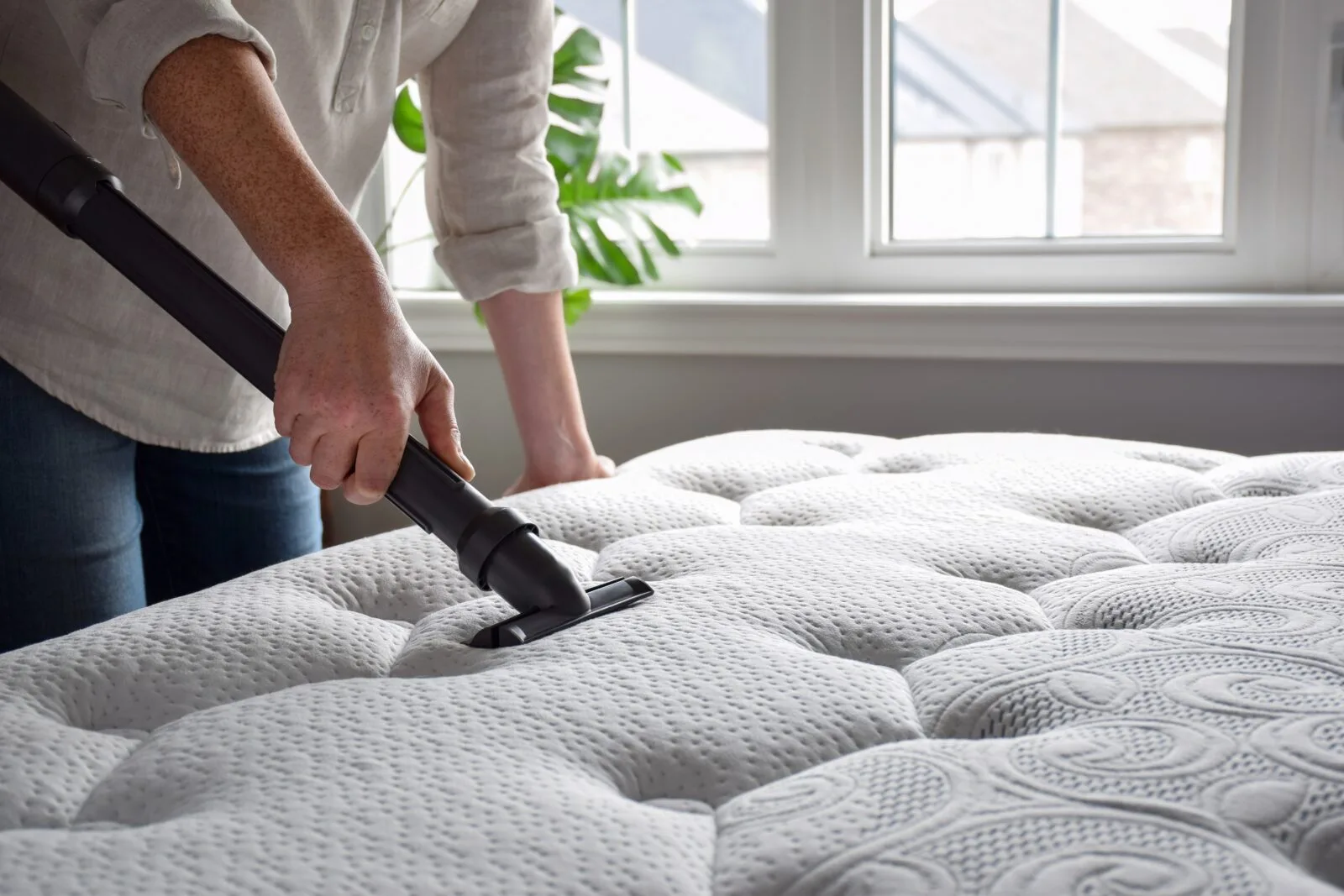How to Clean a Garage Floor So It Looks Like New
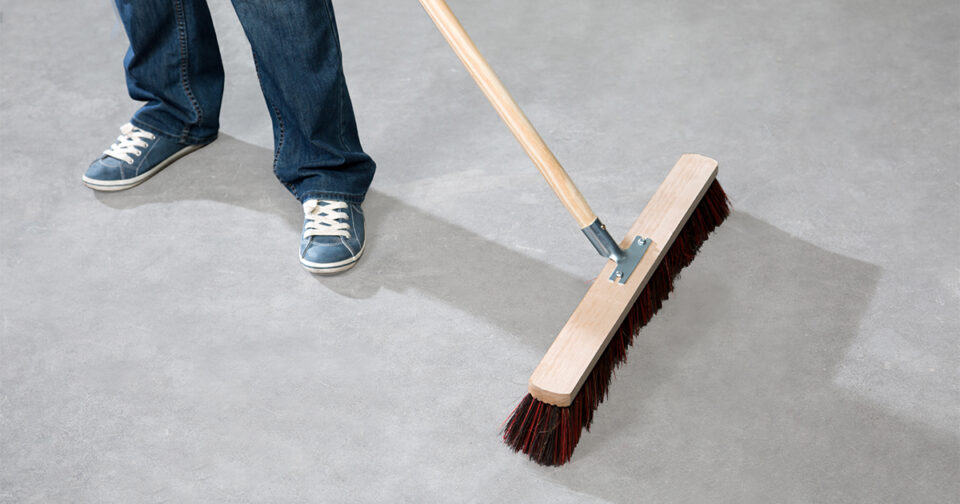
This site contains affiliate links to products. We may receive commission for purchases made through these links. Price at time of publish date may change.
No matter how great you are at keeping your house neat and tidy, chances are, cleaning your garage probably falls to the bottom of your to-do list. Most of us have a garage that’s a bit chaotic, whether that’s because we don’t have a great organization system for all our clutter, or there’s just simply too much stuff crowding up the space. Plus, because it’s an outside area of the house that gets so much foot traffic, it’s easy for the garage to get dirty without us noticing. Shelving systems and organizers will certainly help take care of the messy clutter, but cleaning the garage floors is what’ll really make your space feel brand-new. In fact, cleaning your concrete garage floor will not only help the space look better, but it’ll also extend the life of your structure. And guess what? It’s easier than you think.
Cleaning a concrete garage floor can seem like a daunting task, especially if there are years of oil, dirt, and grime that have set in. However, with a spare few hours, the right tools, and a bit of elbow grease, you can restore your garage floor all on your own, and preserve its integrity for years to come. Depending on how many boxes and tools your garage is holding, this could take some time to complete—but don’t worry, you got this! Below, we’re outlining everything you need to take your garage to its cleanest state, including step-by-step instructions on how to clean your concrete garage floor, the necessary cleaning supplies you’ll need along the way, and some answers to questions you might have about the process.
What You’ll Need
- Shop vacuum or broom
- Stiff-bristled scrub brush or mop
- Large bucket
- Concrete cleaner
- Degreaser
- Garden hose
- Baking Soda or Borax
- Rubber gloves
- Rags or shop towels
- Concrete floor sealant (optional)
How to Clean Concrete Garage Floors
Step 1: Clear Out the Garage
Start by removing any cars, bikes, tools, boxes, and other items from the garage floor to outside. This ensures that you can access the entire surface and clean every inch effectively. If you’re planning to do a deep clean, move large items like workbenches or storage racks outside as well.
Step 2: Sweep or Vacuum the Floor
Once your garage is empty, begin by dry sweeping the entire floor to remove any loose dirt, dust, spiderwebs, and debris. If there is a lot of fine dirt on the floor, consider using a shop vacuum to get it up more efficiently (and quickly!). Be sure to pay special attention to the corners and edges, where dirt and dust often accumulate.
Step 3: Pre-Treat Stubborn Stains
Concrete is a very porous material, so it’s not unusual for garage floors to have stubborn stains, especially from oil, grease, and tire marks. To treat these effectively, apply a degreaser, like Goof Off, directly to the stained areas. (Pro tip: For more recent oil stains that haven’t dried yet, you can also use a sprinkle of kitty litter or sawdust to absorb excess oil before applying the degreaser.)
- For oil stains, pour a generous amount of degreaser onto the stain, let it sit for 10-15 minutes (or according to package instructions), and scrub the area clean with a stiff-bristled brush.
- For general grime, a paste made from baking soda or borax and water can help lift stubborn dirt from the floor. Apply the paste to affected areas and scrub with a brush.
Step 4: Mix Your Cleaning Solution
Next, fill a bucket with warm water and add the recommended amount of concrete cleaner according to the label. For a strong homemade solution, you can mix 1 tablespoon of Dawn dish soap with 1 gallon of warm water. (Use less dish soap if you’re working with lighter soiled floors or epoxy-coated garage floors.) If you are using a specialized concrete cleaner, follow the instructions on the label for proper dilution.
Step 5: Mop the Floor
With your cleaning solution ready, take a stiff-bristled scrub brush and begin cleaning the floor in sections. Start at the end of the garage furthest from the garage door and work your way towards the exit to avoid walking on the freshly cleaned areas. Use a back-and-forth and circular motion to scrub up any dirt and grime, paying extra attention to any stains or heavily soiled areas.
If the floor is extremely dirty or has years of built-up grime, you may want to consider using a pressure washer. Set it to a low-pressure setting to avoid damaging the concrete, and use it to clean the floor thoroughly.
Step 6: Rinse the Floor
Once you’ve scrubbed the entire floor, it’s time to rinse off the cleaning solution. If you’re using a pressure washer, this step will be easier since you can use it to spray off the detergent and dirt. If you’re cleaning by hand, use a hose or a mop with clean water to rinse the floor thoroughly, ensuring that no detergent or cleaning residue is left behind. Remember to only use as much water as necessary—you don’t want to cause excess dampness in your garage.
Step 7: Dry the Floor
After rinsing the surface clean, use old towels or rags to dry the floor, or allow the floor to air-dry naturally with the garage door open for at least six hours. Concrete floors tend to hold onto moisture, so it’s important to allow the surface to dry completely before you begin to pile boxes and gear back onto the floors to prevent water stains or mildew growth.
Step 8: Seal the Floor (Optional)
For added protection and longevity, you may want to consider sealing your concrete garage floor after cleaning, which will help protect the surface from stains, moisture, and other damage. Concrete sealers can be found at most home improvement stores—simply follow the manufacturer’s instructions for application and make sure the floor is completely dry before sealing.
Step 9: Replace Items and Maintain Regularly
Once the floor is clean and dry, you can return all your gear to its rightful place and park your cars back in the space. Consider adding mats or rugs in high-traffic areas to minimize dirt buildup and protect the floor, and commit to a regular sweeping and cleaning schedule so your garage floor will stay in good condition for years to come.
Protect Your Investment
Spring Cleaning Savings: Get $225 off for a limited time!

Frequently Asked Questions
Will Dawn dish soap clean concrete?
Dawn dish soap is known to be excellent at cutting through grease and grime, making it a great option for cleaning your garage floors—to a degree. Dawn can tackle mild stains and day-to-day debris quite well, but if your garage hasn’t been cleaned in years or you’re hoping to eliminate massive grease stains, you may need to turn to a more aggressive degreaser made explicitly for concrete floors.
Should I pressure wash my garage floor?
Pressure washing is a great way to cut through years of dirt and grime, harnessing the power of water to unstick caked-on yuck. That said, because power washing is so, well, powerful, you’ll want to be careful how and when you use it. Avoid pressure washing any concrete floor that is actively chipping or degrading. If you do choose to power wash your concrete floor, set it to the lowest pressure setting possible and keep the stream of water moving in a sweeping motion to avoid directing too much pressure to any one area.
What is the best liquid to clean a concrete garage floor?
When aiming to clean your concrete garage floor to a like-new shine, it’s always a good idea to use a concrete cleaner dedicated to the job. Many brands, like Rust-Oleum, SimpleGreen, and Zep have formulas dedicated to cleaning concrete, which is porous and therefore more likely to hang on to dirt and grime than other materials.
Shop Garage Floor Cleaning Solutions
18 Garage Storage Ideas to Control the Clutter
Say “hello” to the organized garage of your dreams.
Read More